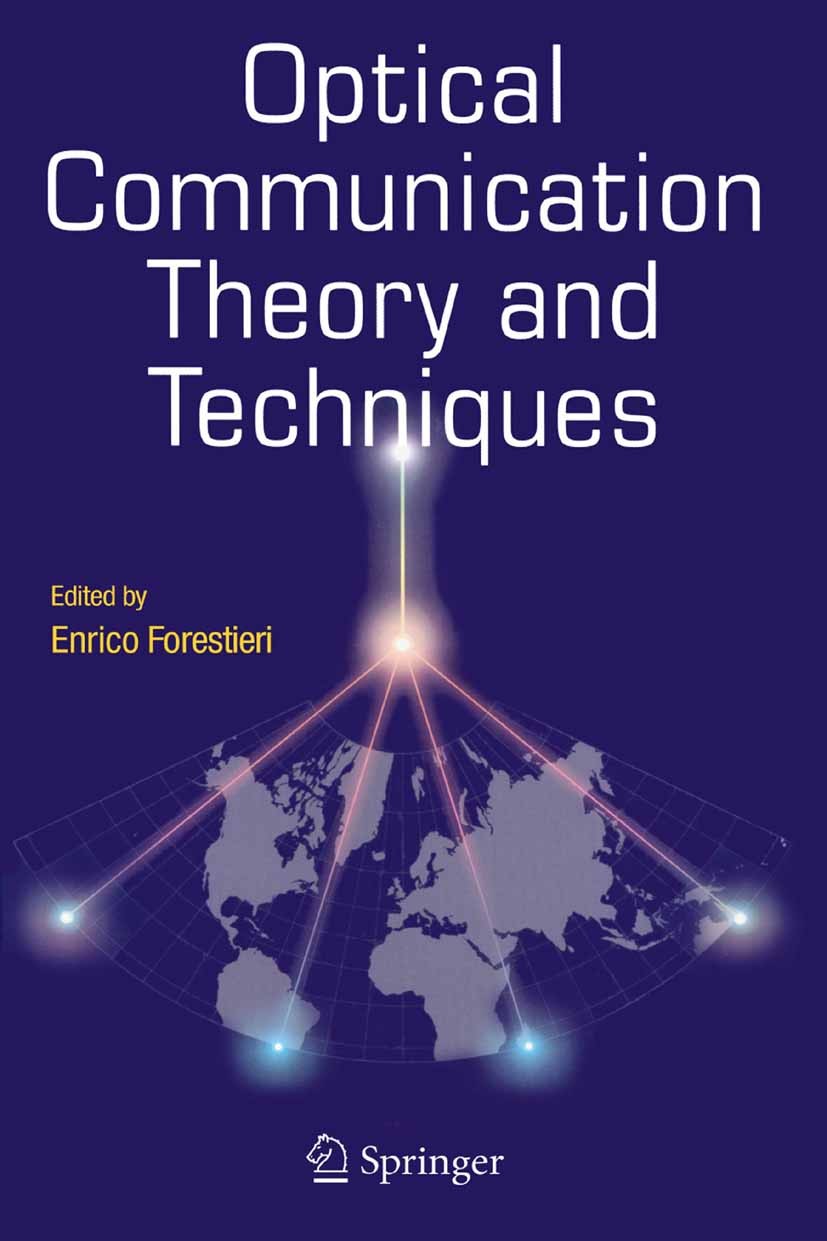| 书目名称 | Optical Communication Theory and Techniques | | 编辑 | Enrico Forestieri | | 视频video | http://file.papertrans.cn/703/702532/702532.mp4 | | 概述 | Comprises the proceedings of the 2004 International Tyrrhenian Workshop on Digital Communications, which will be held in Italy in 2004.This "top quality event organized annually since 1983...by the It | | 图书封面 |  | | 描述 | Since the advent of optical communications, a greattechnological effort has been devoted to the exploitation of the huge bandwidth of optical fibers. Sta- ing from a few Mb/s single channel systems, a fast and constant technological development has led to the actual 10 Gb/s per channel dense wavelength - vision multiplexing (DWDM) systems, with dozens of channels on a single fiber. Transmitters and receivers are now ready for 40 Gb/s, whereas hundreds of channels can be simultaneously amplified by optical amplifiers. Nevertheless, despite such a pace in technological progress, optical c- munications are still in a primitive stage if compared, for instance, to radio communications: the widely spread on-off keying (OOK) modulation format is equivalent to the rough amplitude modulation (AM) format, whereas the DWDM technique is nothing more than the optical version of the frequency - vision multiplexing (FDM) technique. Moreover, adaptive equalization, ch- nel coding or maximum likelihood detection are still considered something “exotic” in the optical world. This is mainly due to the favourable char- teristics of the fiber optic channel (large bandwidth, low attenuation, channel stab | | 出版日期 | Book 2005 | | 关键词 | Modulation; Phase; Symbol; Transmission; Trellis-Code; Turbo-Code; code; coding theory; communication; commun | | 版次 | 1 | | doi | https://doi.org/10.1007/b100765 | | isbn_softcover | 978-1-4419-3577-9 | | isbn_ebook | 978-0-387-23136-5 | | copyright | Springer-Verlag US 2005 |
The information of publication is updating

|
|
 |Archiver|手机版|小黑屋|
派博传思国际
( 京公网安备110108008328)
GMT+8, 2025-11-12 22:41
|Archiver|手机版|小黑屋|
派博传思国际
( 京公网安备110108008328)
GMT+8, 2025-11-12 22:41


